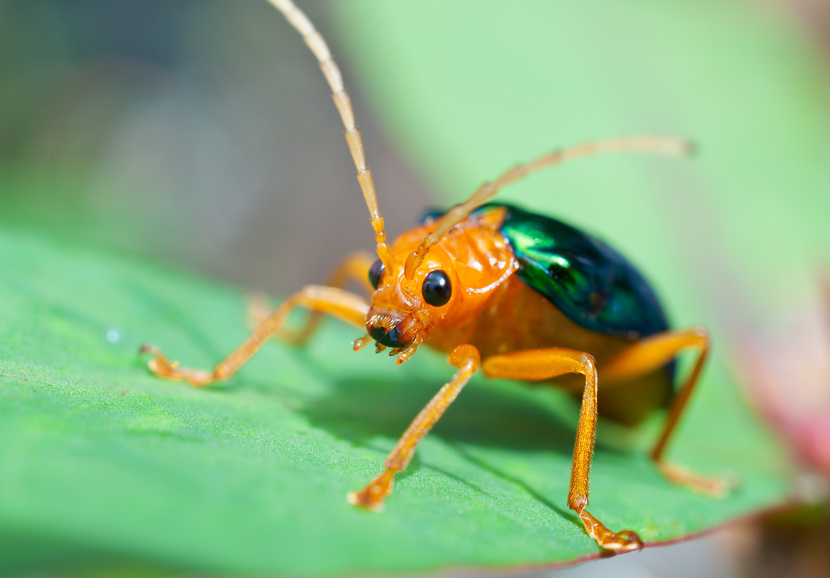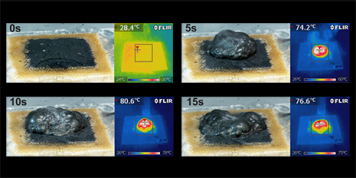The shiny blue-green bombardier beetle has one of nature's most aggressive chemical defense systems. It releases a spray that's powerful enough to kill ants when it's threatened.
It works by storing two different chemicals separately in its abdomen. When the beetle feels threatened, it sparks a process that mixes the two in a reaction chamber in its abdomen, forming a toxic compound that can be sprayed on predators (there's a video at the bottom of this post).
“When you see how elegantly nature solves problems, you realize how deadlocked the world of technology often is,” says Wendelin Jan Stark, a professor from the ETH Department of Chemistry and Applied Biosciences. He and his team therefore looked to the bombardier beetle for inspiration and developed a chemical defense mechanism designed to prevent vandalism – a self-defending surface composed of several sandwich-like layers of plastic.
The researchers use plastic films with a honeycomb structure for their self-defending surface. The hollow spaces are filled with one of two chemicals: hydrogen peroxide or manganese dioxide. The two separate films are then stuck on top of each another. A layer of clear lacquer separates the two films filled with the different chemicals. When subjected to an impact, the interlayer is destroyed, causing the hydrogen peroxide and manganese dioxide to mix. This triggers a violent reaction that produces water vapor, oxygen and heat.
The newly developed film may be particularly well suited to protecting ATMs or cash transports, write the researchers in their paper published in the Journal of Materials Chemistry A. In ATMs, banknotes are kept in cash boxes, which are exchanged regularly. The Edinburgh-based European ATM Security Team reports that the number of attacks on ATMs has increased in recent years.
 |
Front and back of a EUR 5 banknote, dyed blue
by the self-defending surface. (Photo: ETH Zurich)
|
If the film is destroyed, both the foam and the dye are released, thereby rendering the cash useless. The DNA nanoparticles that are also released mark the banknotes so that their path can be traced.
The ETH researchers' findings were published in the Journal of Materials Chemistry A. More information here, via CBS News.


No comments:
Post a Comment